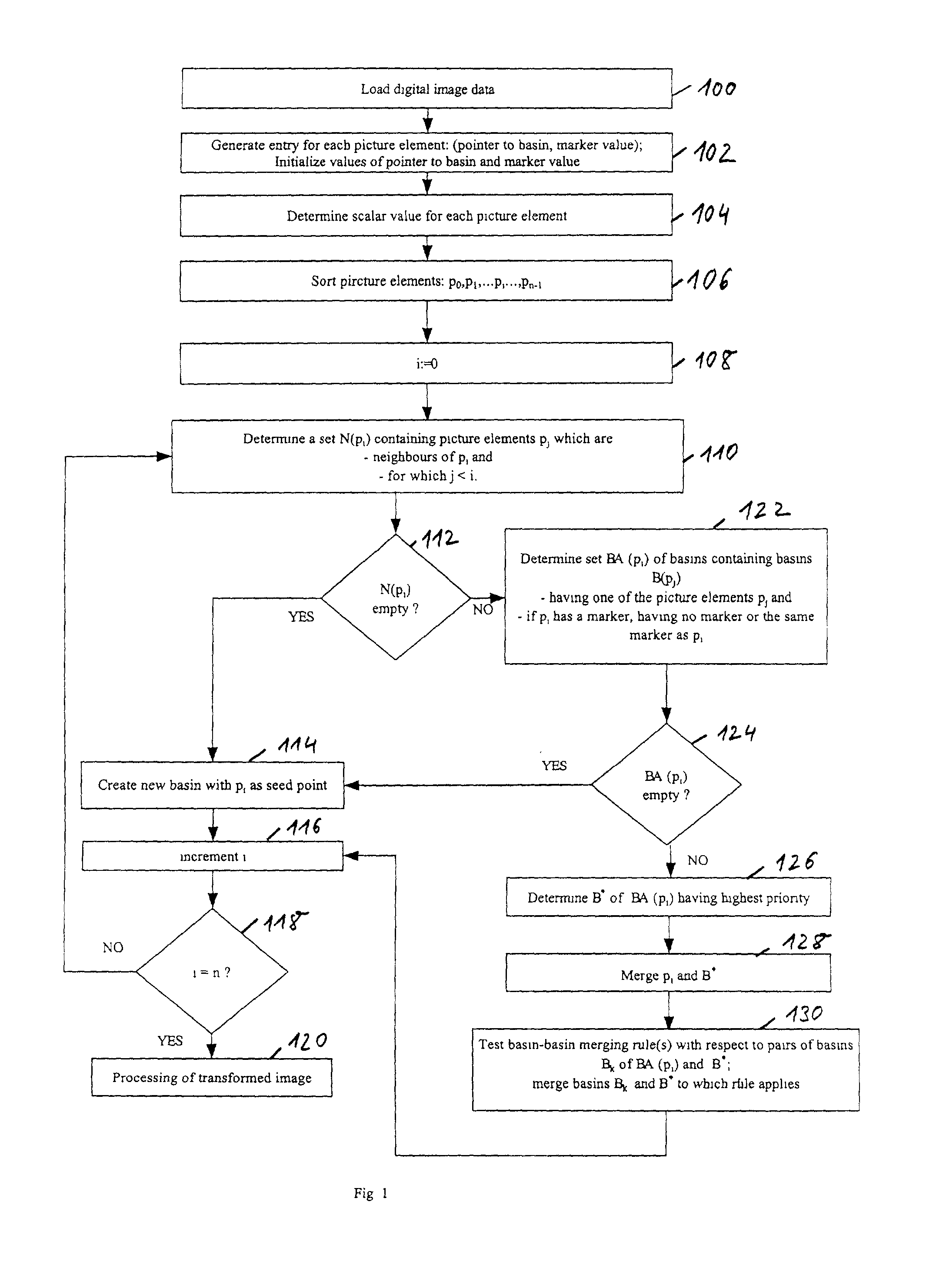Computer system and a method for segmentation of a digital image
a computer system and digital image technology, applied in image enhancement, image analysis, instruments, etc., can solve the problems of reducing objectivity, unable to fully automate the thresholding and morphology system in many cases, and many specific segmentation problems that have not been satisfactorily solved, etc., to achieve fast and with computational costs, increase image resolution, and accurate measurement of volume
- Summary
- Abstract
- Description
- Claims
- Application Information
AI Technical Summary
Benefits of technology
Problems solved by technology
Method used
Image
Examples
Embodiment Construction
[0098]FIG. 1 shows a preferred embodiment of a watershed transformation method in accordance with a first embodiment of the invention.
[0099]In step 100 digital image data is loaded. The present invention is not restricted with respect to the kind of image data and is broadly applicable to a variety of classes of image data. The present invention is particularly useful for medical image data, in particular digital image data acquired from computer tomographic images, magnetic resonance images and T1-weighted magnetic resonance images. Further it can be advantageously employed to other radiologic images.
[0100]In step 102 a data entry is generated for each picture element of the digital image data. Typically digital image data comprises a large number of picture elements, i.e. pixels for two-dimensional images and voxels for three-dimensional images. In addition there are also four-dimensional images where the fourth dimension is time. Such four-dimensional images are acquired for obse...
PUM
 Login to View More
Login to View More Abstract
Description
Claims
Application Information
 Login to View More
Login to View More - R&D
- Intellectual Property
- Life Sciences
- Materials
- Tech Scout
- Unparalleled Data Quality
- Higher Quality Content
- 60% Fewer Hallucinations
Browse by: Latest US Patents, China's latest patents, Technical Efficacy Thesaurus, Application Domain, Technology Topic, Popular Technical Reports.
© 2025 PatSnap. All rights reserved.Legal|Privacy policy|Modern Slavery Act Transparency Statement|Sitemap|About US| Contact US: help@patsnap.com



